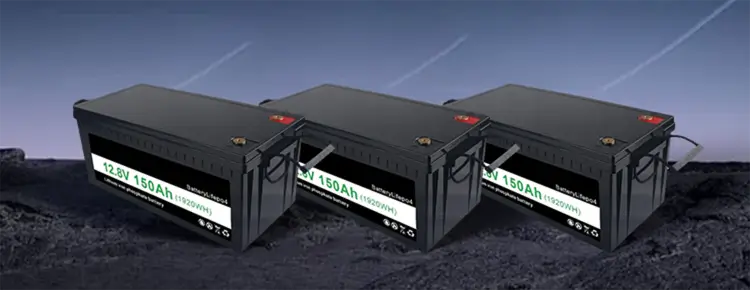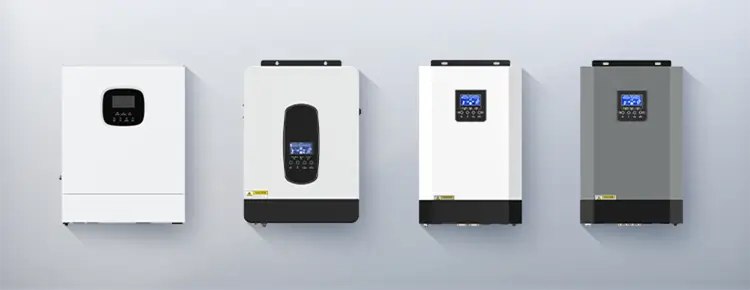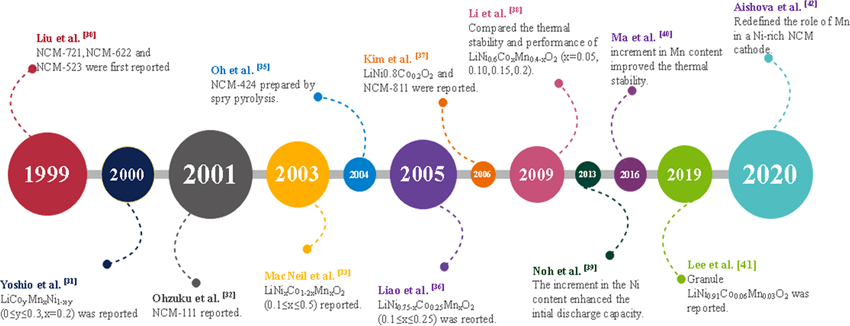



Blog
Hot Category
Latest Blog
19 Jan 2025
Nlelsen
The development of ternary lithium batteries is an important branch of the continuous evolution of lithium battery technology, and has a rich history.

In the 1970s, M. S. Whittingham of Exxon made the first lithium battery. He used titanium sulfide as the positive electrode material and metallic lithium as the negative electrode material. This pioneering work laid the foundation for the subsequent development of lithium batteries. However, the batteries at that time had many problems and did not move towards large-scale commercial applications.
With the deepening of research, ternary materials such as nickel-cobalt-manganese and nickel-cobalt-aluminum were successively developed from 1997 to 2000. The emergence of these materials provided a key material basis for the birth of ternary lithium batteries. However, at this time, ternary lithium batteries still faced many technical and market challenges, and their market share was far lower than that of the already developed lithium iron phosphate batteries.
In 2004, lithium batteries were introduced to China. Lithium iron phosphate has always been the mainstream route of China's power batteries. At that time, only a few companies tried to use ternary materials, which were marginal in the market. In 2007, BYD released its latest lithium iron phosphate battery and entered the field of new energy vehicles. In the following years, lithium iron phosphate batteries dominated China's new energy vehicle market.
Although ternary lithium batteries have some theoretical advantages, such as energy density, their development was relatively slow during this period due to immature technology, high costs and low market recognition.
In 2013, Tesla's profit in the first quarter magnified the advantages of ternary materials. Tesla's success in the field of new energy vehicles has aroused global attention to high-energy-density batteries. The high energy density of ternary lithium batteries has made them begin to receive more attention.
In China, at the 2014 Beijing Auto Show, manufacturers such as JAC, Chery, BAIC, and Zotye said that they would use ternary materials in their latest models. Moreover, in 2016, China included the energy density of battery systems into the subsidy standards for new energy vehicles for the first time. High-energy-density ternary lithium batteries became one of the key assessment items for meeting subsidy requirements and obtaining national subsidies. This policy promoted the rapid development of ternary lithium batteries in the Chinese market.
2018 was a key node. The overall installed capacity of ternary lithium batteries surpassed that of lithium iron phosphate batteries for the first time. This change marked a major breakthrough in the market position of ternary lithium batteries. CATL has occupied half of the power battery field with its ternary lithium batteries.
In modern times, ternary polymer lithium batteries are widely used in power batteries, power systems, household energy storage and other fields. Its basic components include shells, diaphragms, electrolytes, positive electrode materials and negative electrode materials. In terms of working principle, when charging, Li⁺ is deintercalated from the positive electrode and embedded in the negative electrode through the electrolyte. At this time, the negative electrode is in a lithium-rich state; the opposite is true when discharging.
The development of ternary lithium batteries reflects the interaction of multiple factors such as material science, battery technology, market demand and policy orientation. With the continuous development of technology, ternary lithium batteries are expected to continue to optimize in terms of energy density, safety, cost and other aspects in the future, and play an important role in more fields.